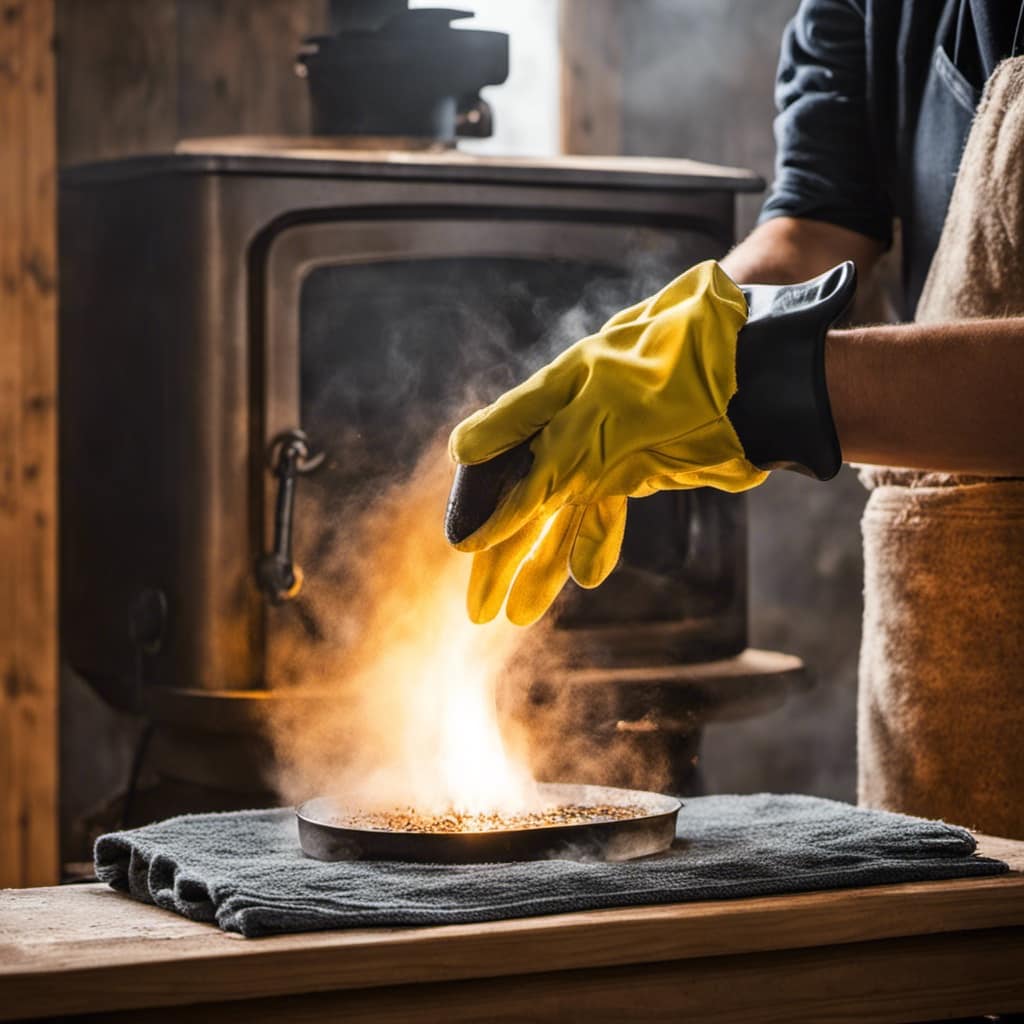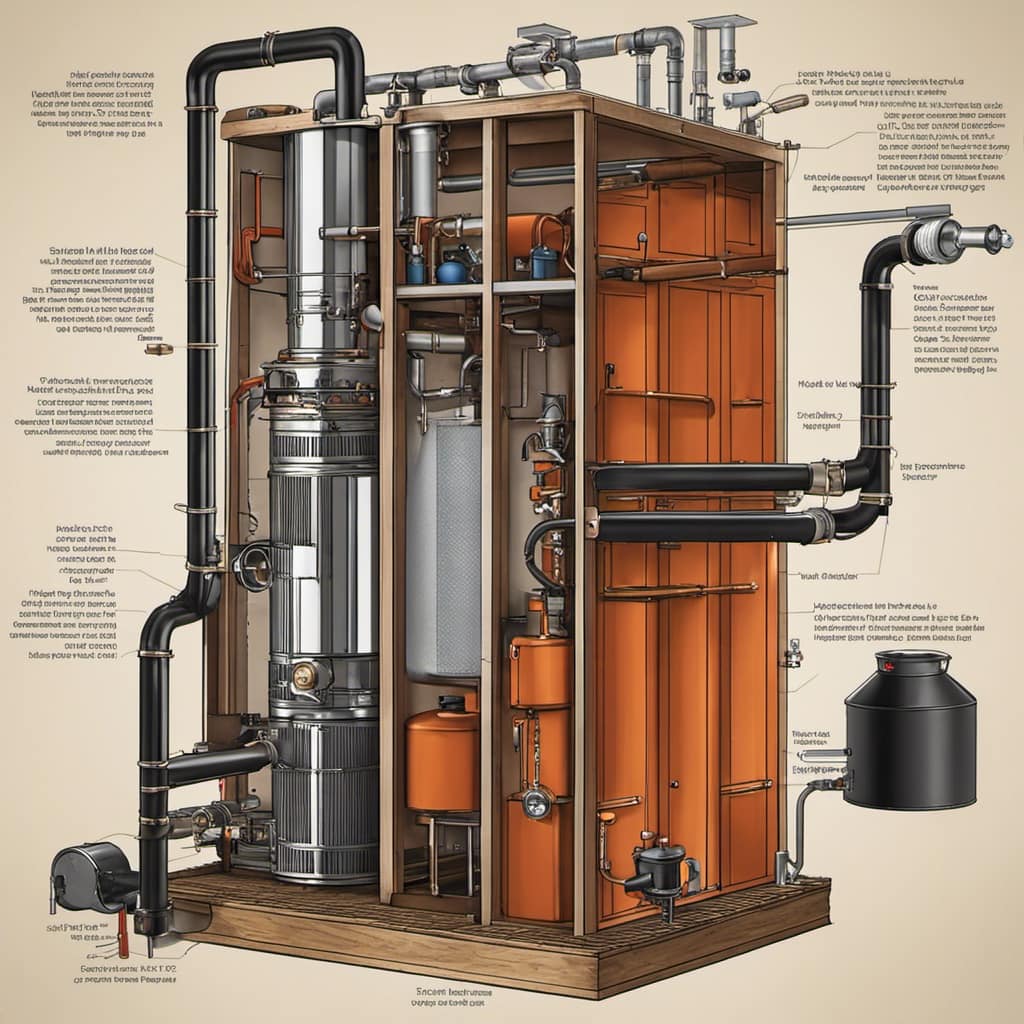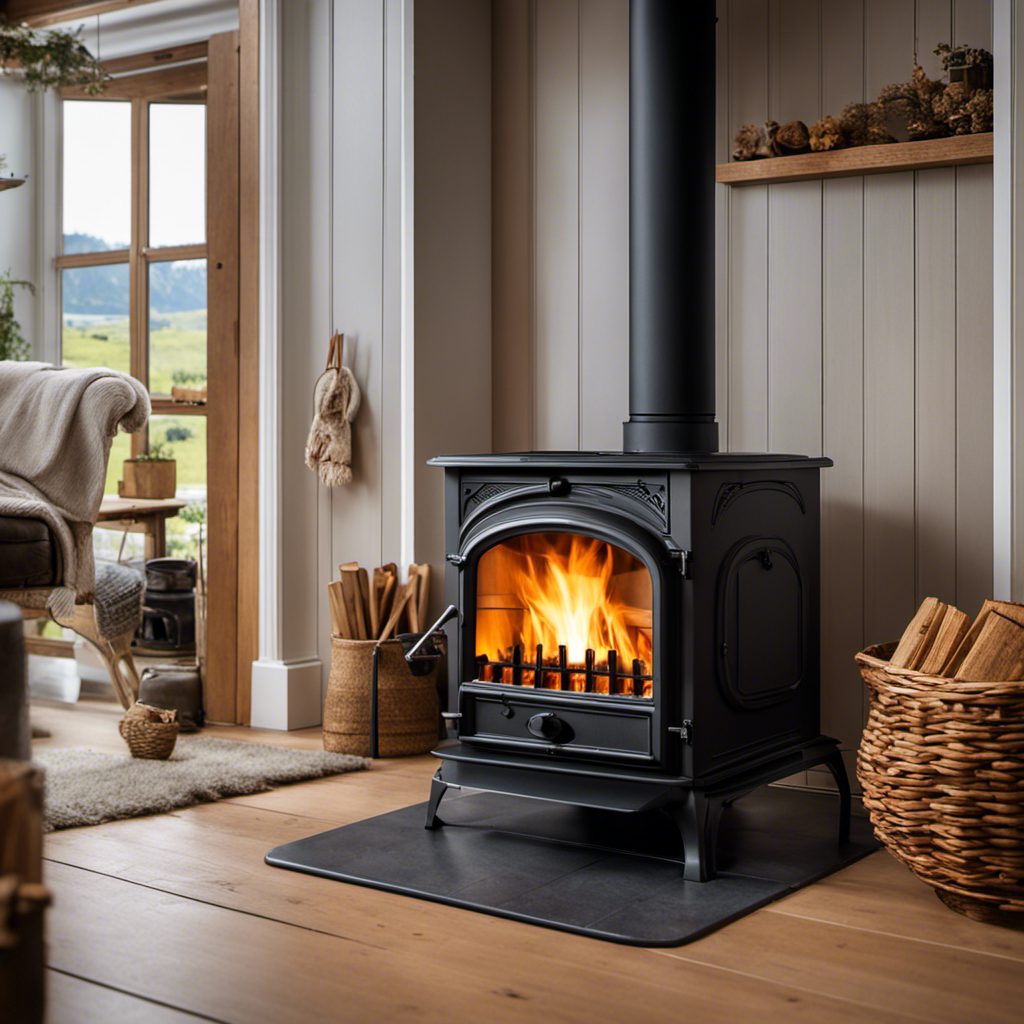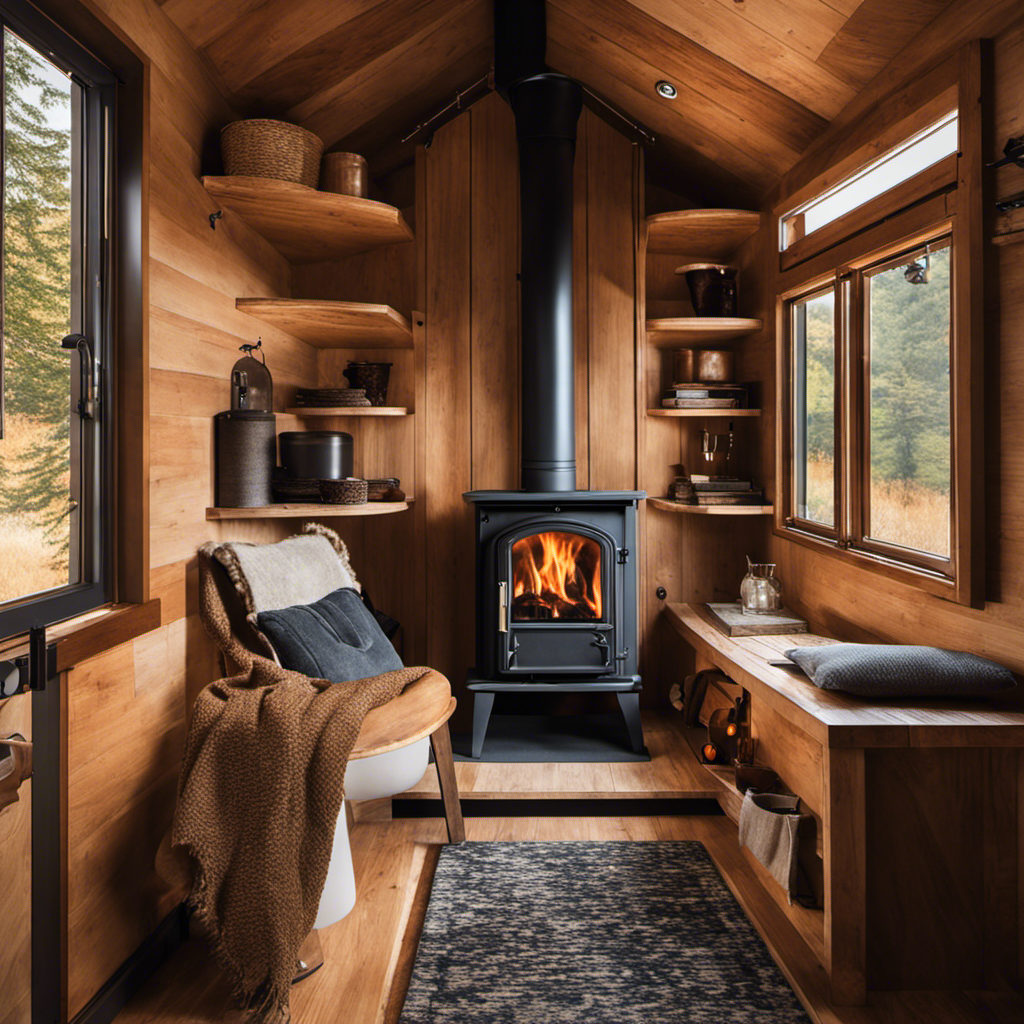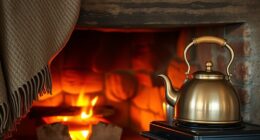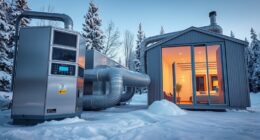
I find myself snuggled up next to my wood stove, attempting to keep warm on a chilly winter evening. However, instead of relishing the comfortable warmth, I was greeted with smoke filling my living room.
It turns out, the culprit was a closed baffle. Insufficient airflow can cause this frustrating problem. Whether it’s a damaged baffle, incorrect positioning, or flue obstructions, understanding the reasons behind the smoke can help us tackle this issue head-on.
So let’s dive into the technical details and find solutions to keep our wood stoves smoke-free.
Key Takeaways
- Insufficient airflow and ventilation, caused by a blocked chimney or obstructions in the vents, can lead to poor combustion and smoke buildup.
- Regular maintenance, such as chimney cleaning and clearing vents from obstructions, is necessary to prevent blockages and ensure adequate air supply.
- Damaged or misaligned baffles can disrupt combustion efficiency and increase smoke emissions, so regular inspection and maintenance are essential.
- Incorrect baffle position or alignment with the stove’s flue outlet can cause smoke leakage, so proper installation and adjustment are crucial for preventing this issue.
Insufficient Airflow
I can’t figure out why there’s such insufficient airflow in my wood stove. It’s frustrating to deal with the constant smoking and lack of heat.
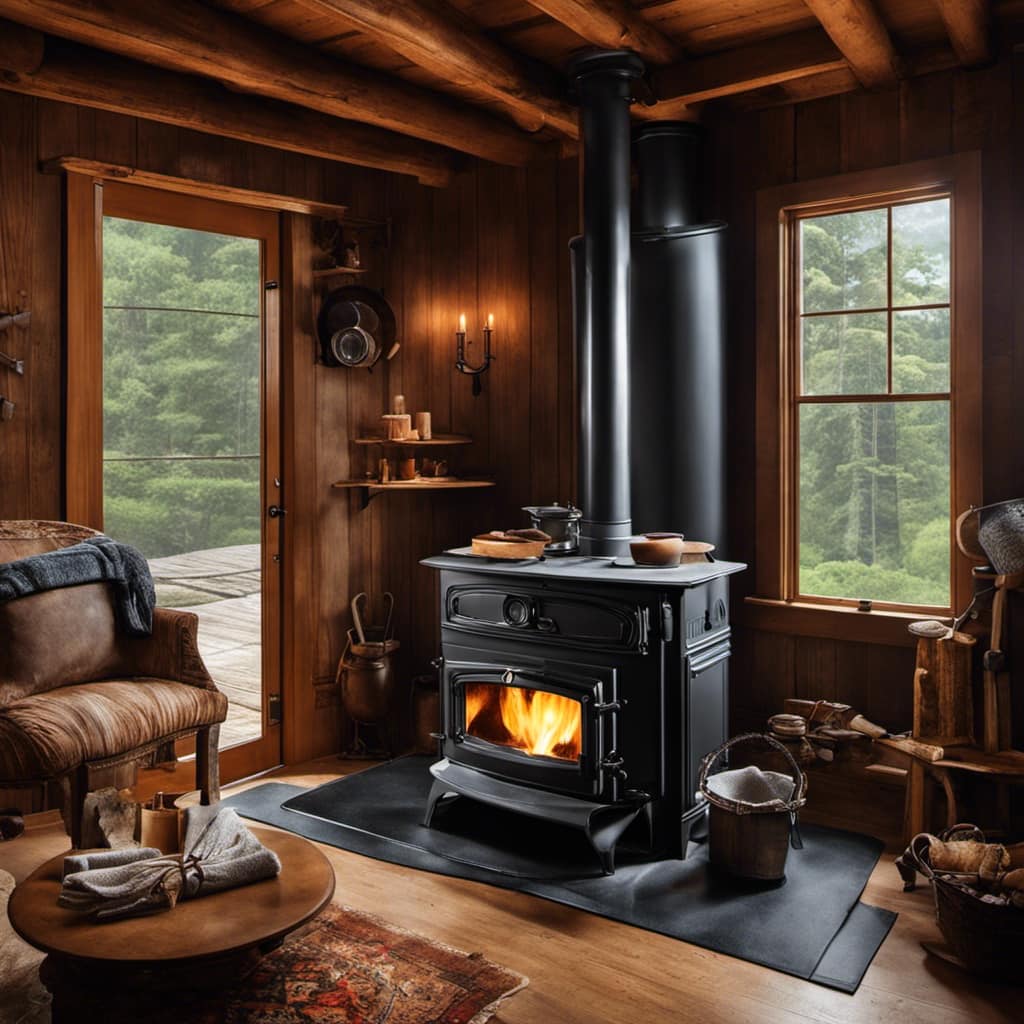
After careful inspection, I discovered that a blocked chimney and ventilation issues were the culprits. A blocked chimney can restrict the flow of air, resulting in poor combustion and smoke buildup. It’s essential to regularly clean and maintain the chimney to prevent blockages caused by creosote or debris.
Ventilation issues can also contribute to insufficient airflow. Inadequate air supply to the stove can hinder combustion and reduce overall efficiency. Ensuring that vents are open and clear from any obstructions is crucial.
Additionally, proper air intake and control settings must be adjusted to optimize airflow and prevent smoke from escaping into the room.
Damaged or Misaligned Baffle
Examining the wood stove, I noticed the damaged baffle and the misaligned parts, causing the smoke to escape into the room and reducing its efficiency.
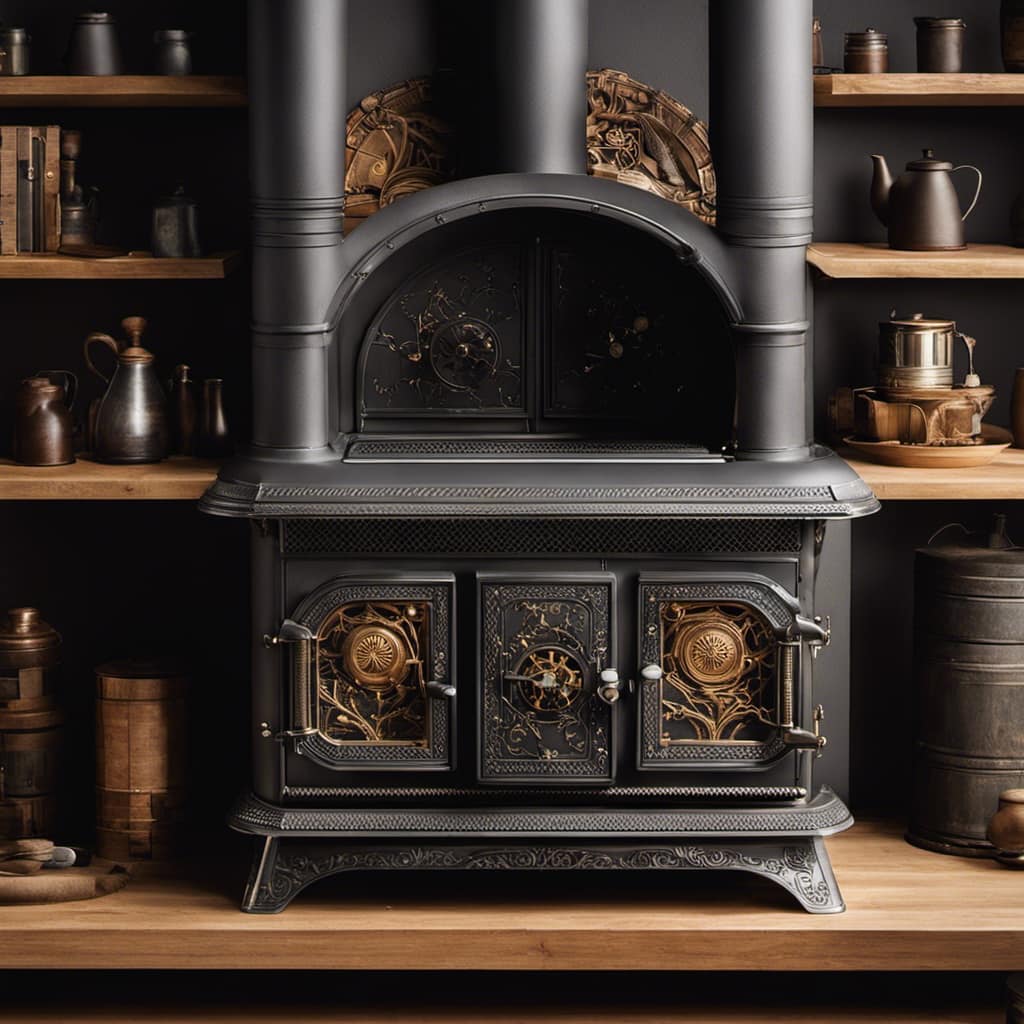
The baffle, a crucial component of the wood stove, is responsible for directing the flow of smoke and gases, promoting combustion efficiency, and preventing smoke from entering the room. A damaged baffle can disrupt this process, leading to poor performance and increased smoke emissions.
Regular baffle maintenance is essential to ensure optimal stove performance. It’s recommended to inspect the baffle for any signs of damage or misalignment regularly. If any issues are found, they should be addressed promptly to prevent further damage and restore the stove’s efficiency.
Proper baffle maintenance, including cleaning and replacement when necessary, will ensure a well-functioning wood stove and a comfortable living environment.
Incorrect Baffle Position
While the baffle position may be incorrect, it’s important to adjust it properly to ensure efficient smoke flow and prevent any smoke leakage. Here are four key steps to correctly install and troubleshoot baffle issues in a wood stove:
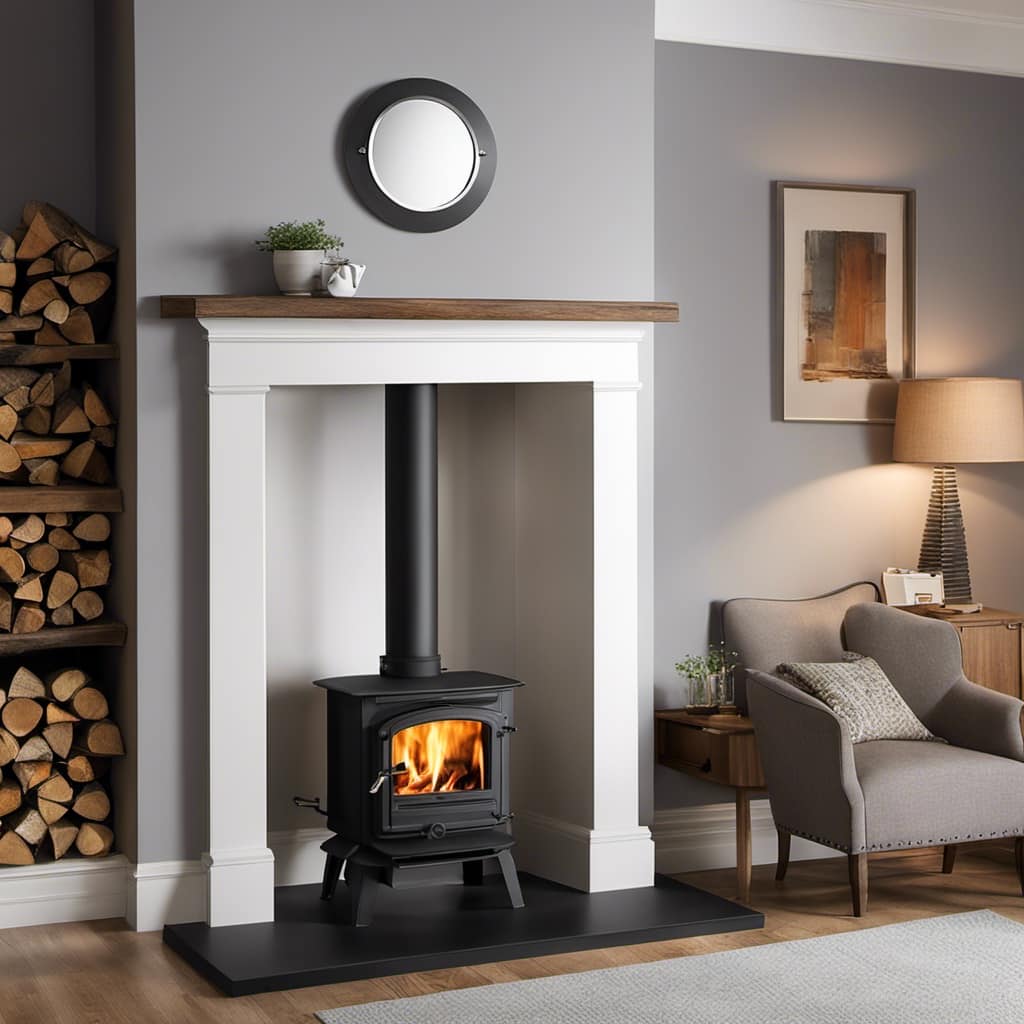
-
Check the manufacturer’s instructions: Refer to the manual or consult the manufacturer’s website for specific guidance on baffle installation and adjustment.
-
Verify proper alignment: Ensure that the baffle is correctly positioned and aligned with the stove’s flue outlet. Any misalignment can lead to smoke leakage.
-
Inspect for damage: Thoroughly examine the baffle for any signs of damage, such as cracks or warping. Damaged baffles should be replaced to ensure proper functionality.
-
Adjust airflow: Fine-tune the baffle position to optimize airflow and smoke circulation. Experiment with different positions until the desired smoke flow is achieved.
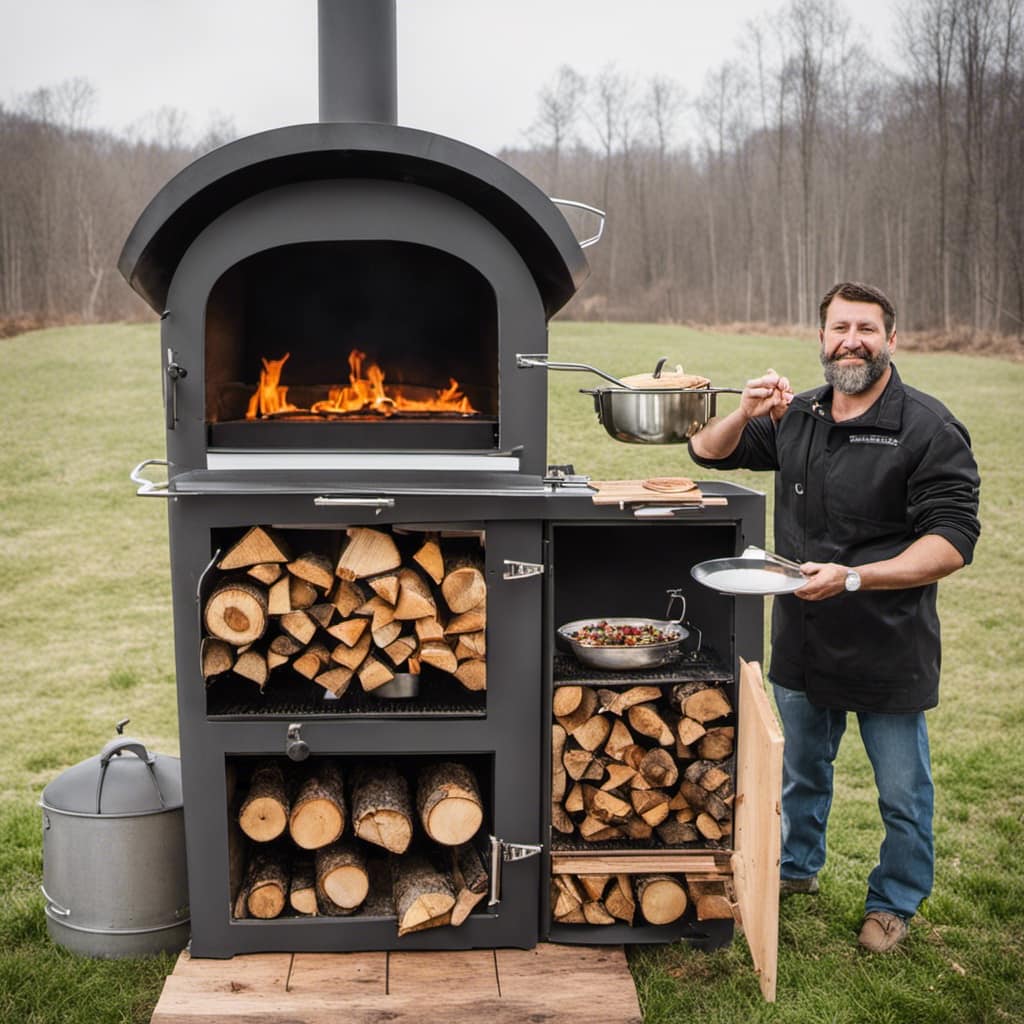
Flue Obstructions
Although I adjusted the baffle properly, I discovered that there were flue obstructions causing smoke to back up into the wood stove. This issue can often be resolved by implementing effective flue cleaning techniques.
To troubleshoot wood stove draft issues, it’s important to identify and address any potential flue obstructions. These obstructions can include creosote buildup, debris, or even bird nests. By regularly cleaning the flue using appropriate techniques, such as using a flue brush or a professional chimney sweep, you can ensure that the smoke is properly vented out of the wood stove. This not only improves the efficiency of the stove but also reduces the risk of smoke entering your living space. Proper maintenance and cleaning of the flue are crucial for the smooth operation of your wood stove.
Now, let’s discuss improper wood burning techniques and how they can further exacerbate the issue of smoke backup in the wood stove.
Improper Wood Burning Techniques
I’ve noticed that using wet or unseasoned wood can result in poor combustion and increased smoke production when burning in a wood stove. This not only affects the efficiency of the stove, but it can also pose fire safety risks.

To ensure a safe and efficient wood stove operation, it’s important to follow these fire safety precautions and proper burning techniques:
-
Use properly seasoned wood: Seasoned wood has a moisture content of around 20%. Burning wet or unseasoned wood can lead to incomplete combustion and excessive smoke.
-
Store firewood properly: Wood should be stored in a dry, well-ventilated area to allow for proper seasoning. It should be protected from rain and snow to prevent moisture absorption.
-
Clean the stove regularly: Soot and creosote buildup can obstruct airflow and increase the risk of chimney fires. Regularly clean the stove and chimney to maintain optimal performance.
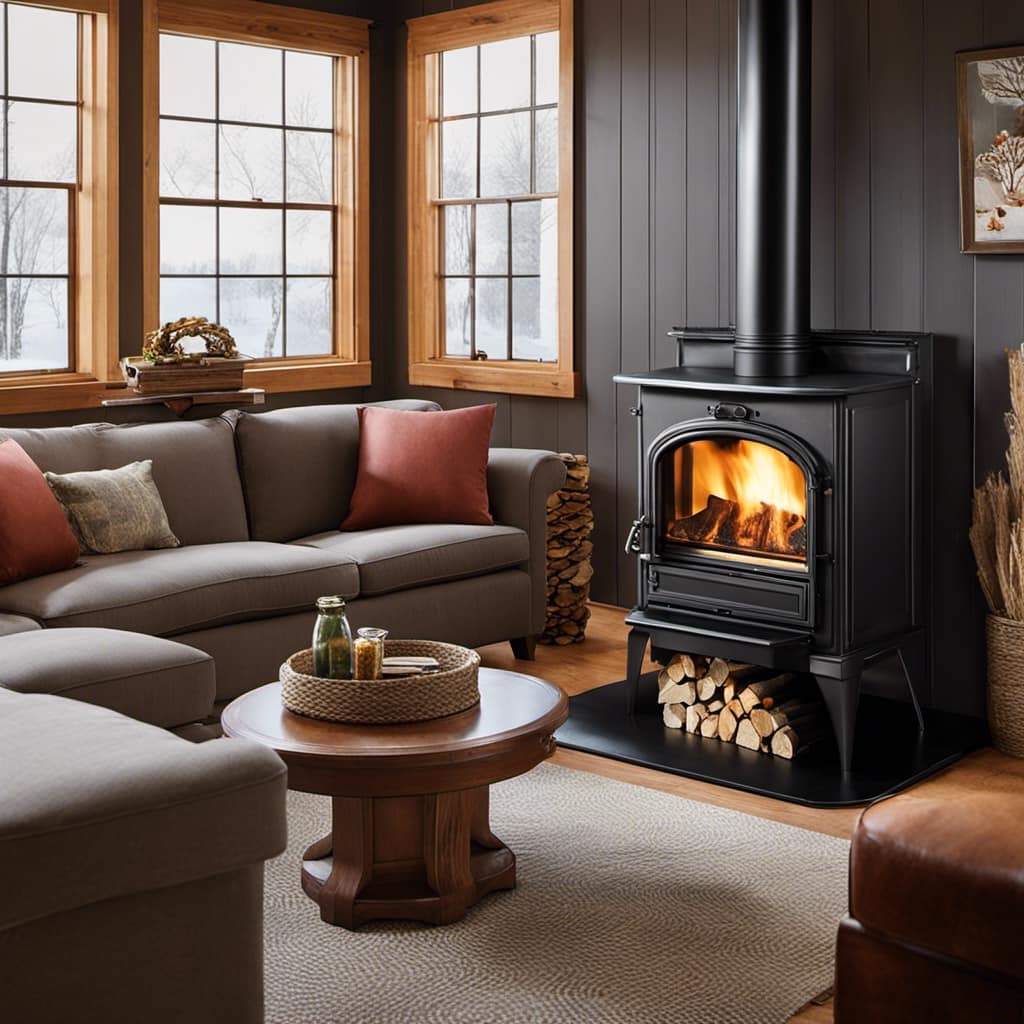
-
Use the air controls correctly: Adjusting the air controls on the stove can help regulate the burn rate and temperature. Follow the manufacturer’s instructions for proper operation.
Frequently Asked Questions
Can a Wood Stove Smoke if There Is Insufficient Airflow?
Yes, a wood stove can smoke if there is insufficient airflow. Insufficient ventilation can cause smoke to back up into the room. Troubleshooting wood stove smoke issues often involves checking for blockages and ensuring proper airflow.
What Are Some Signs That the Baffle in My Wood Stove May Be Damaged or Misaligned?
I’ll begin by discussing signs of a damaged or misaligned baffle in a wood stove. Some indicators include increased smoke production, reduced heat output, and difficulty in controlling the burn rate.
How Can I Determine if My Baffle Is in the Correct Position in My Wood Stove?
To troubleshoot wood stove smoking, I start by determining the correct position of the baffle in my wood stove. This ensures optimal airflow and prevents smoke from escaping when the baffle is closed.
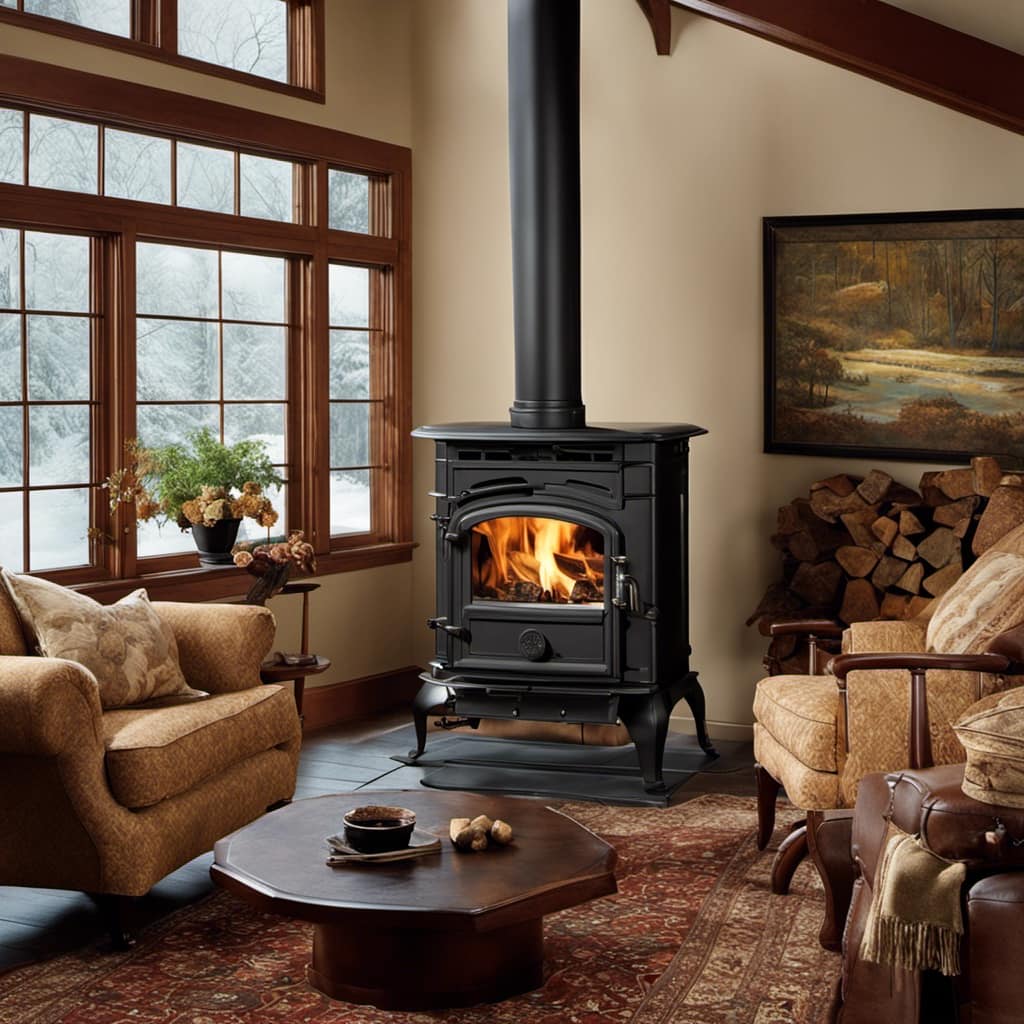
What Are Some Common Types of Flue Obstructions That Can Cause a Wood Stove to Smoke?
Types of flue obstructions that can cause a wood stove to smoke include creosote buildup, bird nests, or debris. To troubleshoot a smoking wood stove, check for these obstructions and ensure proper ventilation.
What Are Some Examples of Improper Wood Burning Techniques That Can Lead to a Smoking Wood Stove?
Using wet or unseasoned wood and not properly opening the damper or air vents are examples of improper wood burning techniques that can cause a smoking wood stove.
Conclusion
In conclusion, a wood stove smoking when the baffle is closed can be caused by various factors.
One interesting statistic to note is that according to a study conducted by the Environmental Protection Agency, around 90% of wood stoves in the United States aren’t used efficiently, leading to increased smoke emissions.
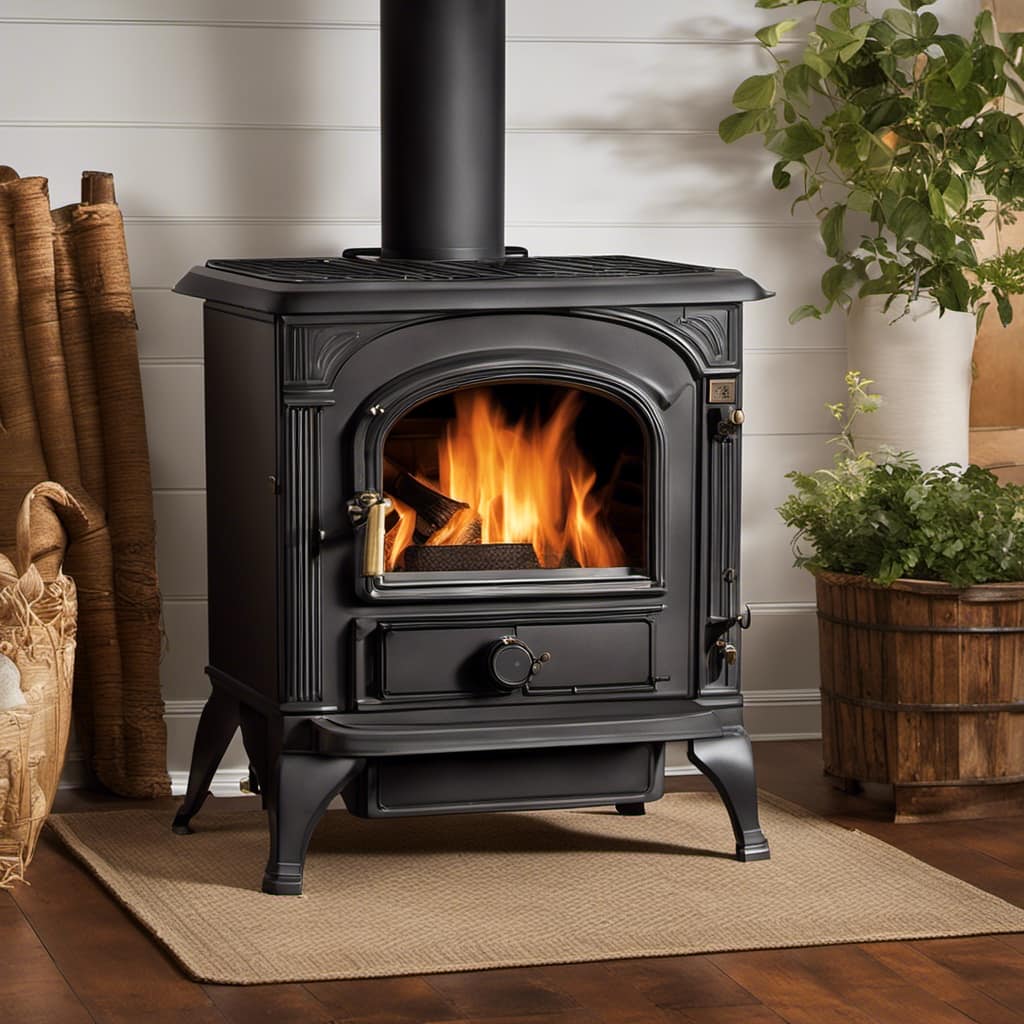
Therefore, it’s crucial to address the potential issues such as insufficient airflow, damaged baffle, incorrect position, flue obstructions, and improper wood burning techniques, in order to ensure optimal performance and reduce smoke production.
Growing up surrounded by the vast beauty of nature, Sierra was always drawn to the call of the wild. While others sought the comfort of the familiar, she ventured out, embracing the unpredictable and finding stories in the heartbeat of nature.
At the epicenter of every remarkable venture lies a dynamic team—a fusion of diverse talents, visions, and passions. The essence of Best Small Wood Stoves is crafted and refined by such a trio: Sierra, Logan, and Terra. Their collective expertise has transformed the platform into a leading authority on small wood stoves, radiating warmth and knowledge in equal measure.



